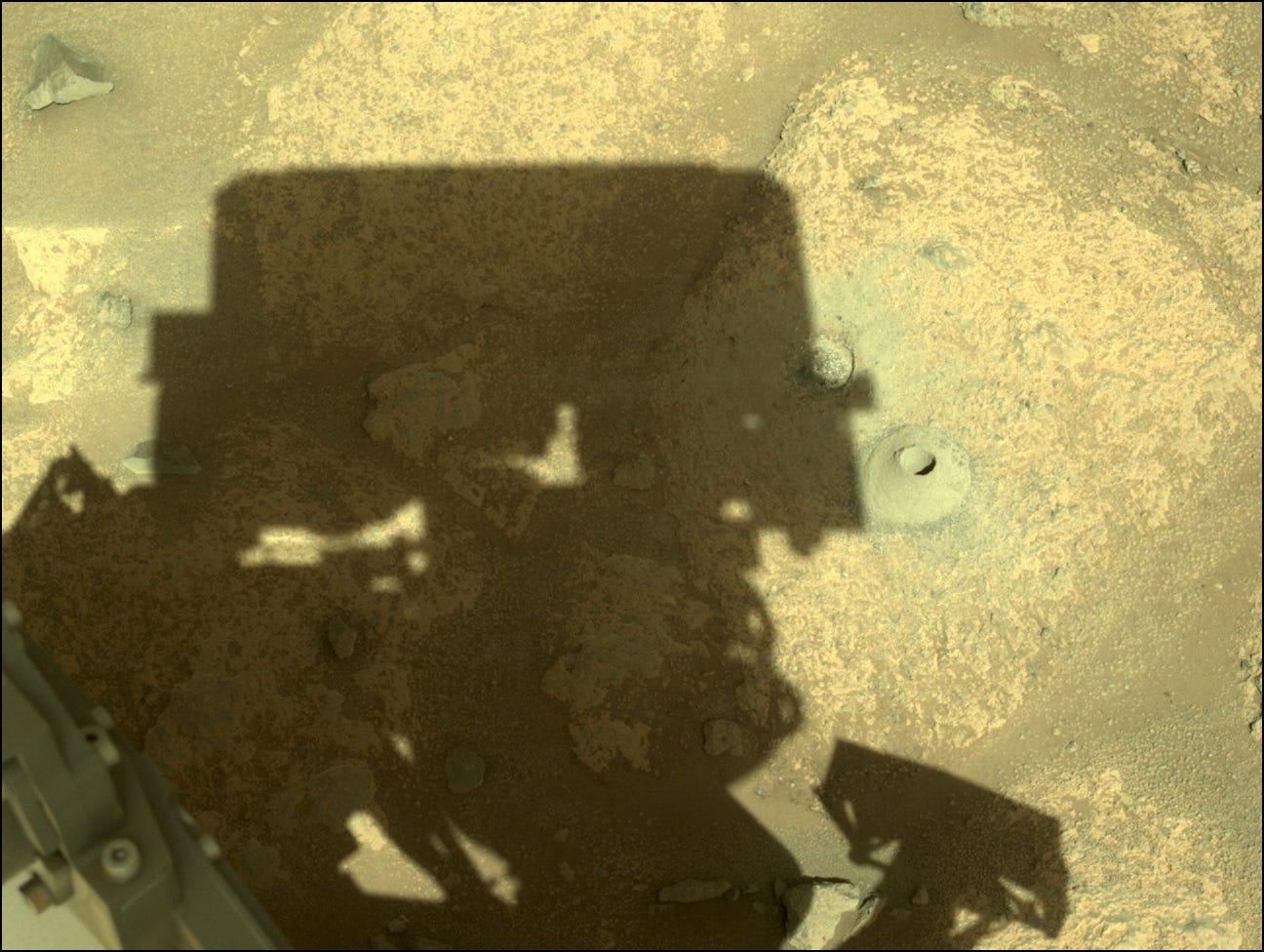Hello Earthlings.
Welcome to another volume of space matter(s)

Have you ever thought about the fact that ANY of the light we’re looking at in the night sky is at the very least a few minutes old. If I stood on the surface of Mars and shined a really really really bright light at you back here on earth it would take 3.03 minutes for you to see the light(!). The closest star system to us - Alpha Centauri - is a mere 4 light-years away. That means that any time you look up at Alpha Centauri (which btw is actually a trinary star system… did you know(?)) you’re seeing the star system as it was 4 years ago. How crazy is that? When we inevitably send our first probes to study Alpha Centauri (and btw how fast are they going(?)), they will be in my mind visually time traveling. The truth is things get real funky when *you* start traveling at the speed of light, so I like to think about a voyage at perhaps half the speed of light to our nearest stellar neighbor. As the probe(s) travel towards the new star, they watch as it evolves for years until they get close enough to their destination and finally see the star’s present state. The farther out into space you go the more time you traverse…
Whoa.
let’s go
volume (3):
Holy binary burst, batman(!)

Wow. I mean wow(!). Look at those seemingly perfect circles. Just naturally occurring in space. In our Milky Way Galaxy. 7,800 light-years away. What in the universe is making this beautiful nonchalant geometry(?)! What you’re looking at is an illusion - it’s the reaction between dust clouds in a field of view and a short x-ray burst from a binary star system called V404 Cygni in the constellation Cygnus.
Full stop. Have we talked about binary star systems? Did she say dust again? Why is it emitting x-ray bursts? What is that? Perfect circles?! Wait, dust again… in a field of view? What am I even looking at here, remind me?
A binary system is pretty much what it sounds like - two stars. It is a term used to describe any two stars who orbit together around their common center (scholarly known as the barycenter). Most of the stars you can see in the night sky are actually binary star systems(!). These pairs have been observed in many a variety and yet more bizarre pairings surely await observation. Did you know that Sirius, the brightest star in the night sky, is actually two stars?(!) Sirius A is a main sequence a-type star and it is the brightest in the sky. Sirius B is a faint white dwarf that serves as its dim companion in orbit every 50 years. We’re all definitely seeing Sirius A but B be there too. Most binaries look to the naked eye as one star.

V404 Cygni is a black hole and a half the mass of the sun main sequence star pair. The black hole is actively eating material off of its companion star. The stuff getting eaten by the black hole glows in x-ray wavelengths. As those x-ray waves leave their origin and travel in all directions through space, some of the x-rays run into friction. Remember our most favorite dust in space which is itself the stuff of stars? Clouds of dust in between us and V404 Cygni itself are slowing these x-rays on their way to Chandra’s sensors. The x-rays bounce off of the dust clouds much like a voice echos in a canyon. The result is the incredible geometric illusion in various images of the phenomenon.
Here is another example of an x-ray light echo: Circinus X-1. A binary system containing a neutron star in orbit with a massive star about 31,000 light-years away in the constellation Circinus.

As these x-rays travel through the clouds of dust between us and the x-ray source, astronomers can deduce the distances of the dust clouds and their chemical make up. Believe it or not, unless they’re illuminated it’s very very difficult to see these cosmic dust clouds. As we have already discussed, dust matter(s). Being able to map the dust in our Galaxy is an integral piece of information for understanding our galactic inner workings!
My favorite photo from Mars this week - it’s Perseverance (!)
I love a shadow selfie. Here Percy stands over the first attempt to drill and store a sample that is to later be returned to Earth by another mission. The drilling apparently went fine but somehow the sample didn’t make it into the tube. It’s ok Percy, you’ll get those rocks! And don’t worry Earthlings - Perseverance has 42 more tubes to attempt to fill(!)
Don’t Miss Out (!)
“All men have stars, but they are not the same things for different people. For some, who are travelers, the stars are guides. For others they are no more than little lights in the sky. For others, who are scholars, they are problems... But all these stars are silent. You- You alone will have stars as no one else has them... In one of the stars I shall be living. In one of them I shall be laughing. And so it will be as if all the stars will be laughing when you look at the sky at night..You, only you, will have stars that can laugh!” - Antoine de Saint-Exupéry






